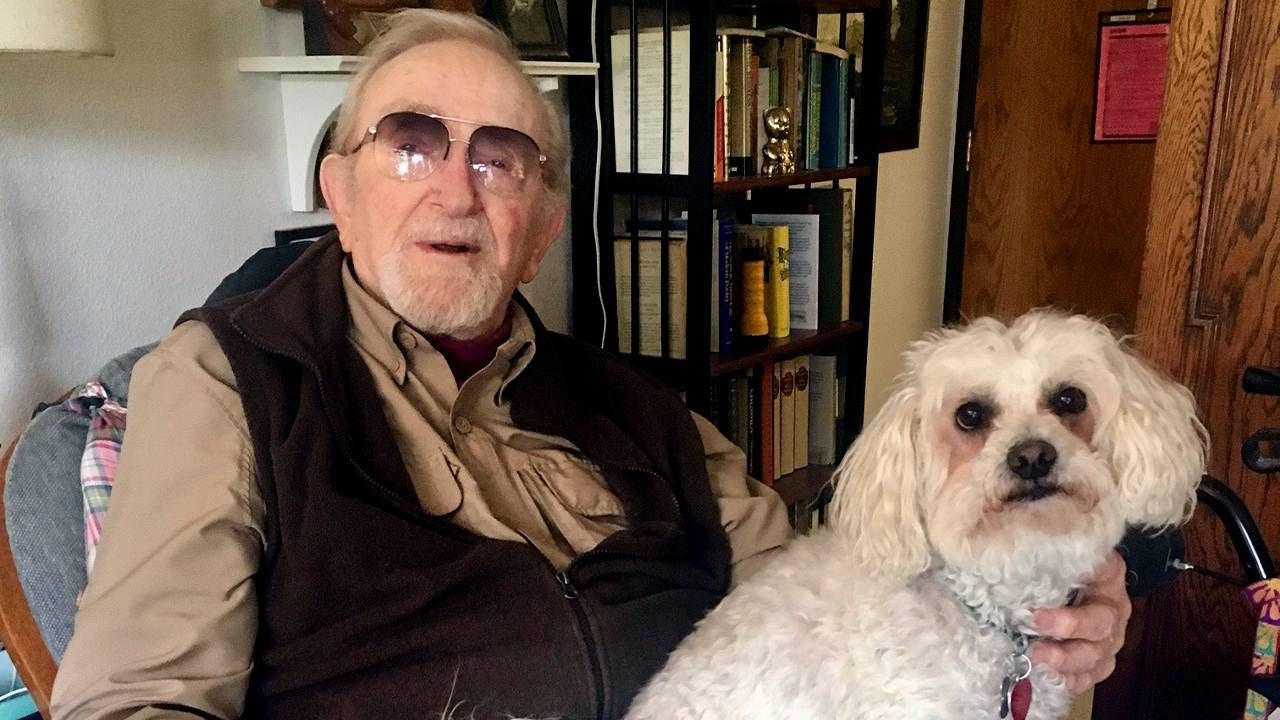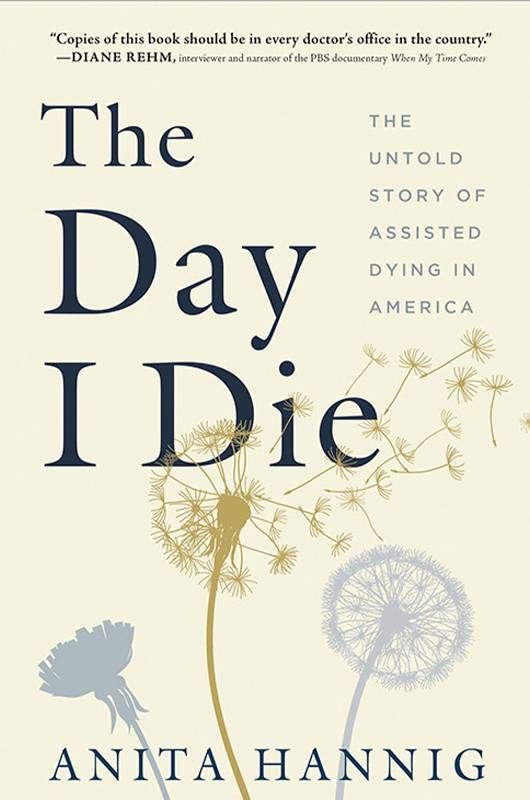'Nothin' About the Blues'
In this prologue to her new book, 'The Day I Die: The Untold Story of Assisted Dying in America,' author Anita Hannig writes of being present for the final hours of a 90-year-old man named Ken
Editor’s note: This book excerpt addresses specific end-of-life issues.
The morning of Ken's death, I stood in front of my closet, trying to figure out what to wear. I knew Ken didn't want his death to be a somber affair. He was ready, giddy even. The drab librarian dress was definitely out. Jeans, on the other hand, seemed a little too casual. I wanted to look nice and give Ken's death the gravity it deserved, while also honoring his wish to celebrate. As I thumbed through my hangers, I couldn't help but feel the dissonance of choosing an outfit for someone's final hours.

Three years into my research on assisted dying, I still found myself in situations like this with no formal playbook. But if I didn't decide promptly, I was going to be late. Finally, I opted for a pair of striped summer slacks, a sleeveless, navy blue satin blouse, and leather sandals. Then I grabbed my notebook and ran out the door.
Thirty blocks to the east, at the foot of one of Portland's iconic city parks, Ken was also getting ready. Though he had spent much of his life flouting propriety, he had decided to dress up for his death. In the quiet light of the morning, he trimmed his white Vandyke beard, slipped into a clean pair of khakis, buttoned his olive-colored dress shirt, and threw on a charcoal vest. He dug out his red bandanna and tied it in a neat triangle knot around his neck. Then he traded his tired plaid house slippers for a pair of elegant, pointy leather brogues.
Ken's breakfast that day was simple: a single hard-boiled egg and a cup of black coffee laced with Fireball whiskey.
Ken's breakfast that day was simple: a single hard-boiled egg and a cup of black coffee laced with Fireball whiskey. Not that it was his habit to drink alcohol with breakfast — it didn't mix well with his heart medications — but today Ken felt festive. He had waited for this day for months.
At 10:30 a.m., I met Ken's prescribing physician, Neil Martin, in the foyer of Ken's retirement facility. Save for his medical bag, which could have passed for a plump briefcase, you wouldn't have guessed Martin was a doctor — he wore a cornflower-blue dress shirt, black Levi's, and hiking sneakers. Martin had begun working with terminally ill patients interested in using Oregon's Death with Dignity law in 2009. After his retirement from family medicine in 2015, he had kept his license so he could continue to volunteer as a physician.
Martin and I signed the facility's guest log and made our way to Ken's apartment in the far corner of the building. At the entrance to the dining hall, next to a roster of activity charts announcing bingo night and water aerobics, a cluster of walkers sat parked, waiting for their owners to return. We swung a left down a wide hallway lined with rustic watercolor paintings all depicting stone bridges reaching across gurgling creeks. The pictures conjured a pleasant but generic nostalgia. Ken couldn't stand them.
When we entered his apartment, everyone else was already there: Ken and his two sons, Tony and Zack; Ken's granddaughter, who had flown in from California; and Sophie, his beloved caregiver. Standing and chatting among the family was Derianna Mooney, a volunteer for End of Life Choices Oregon — a nonprofit that accompanies patients and families on their path to an assisted death. Derianna was here to ensure that everything went smoothly and that Ken felt supported in his wish to die.
The apartment looked exactly like it had the last time I was there: stuffed with furniture, unwieldy plants, Ken's hand-drawn paintings, and stacks of loose paper. Two golden helium balloons —spelling 90 — still clung, bloated, to the ceiling like giant bubbles trapped under a bottle cap. Ken had turned ninety exactly a week ago.
As I greeted his family, Martin, Derianna, and Ken huddled to go over some last-minute logistics. I could tell that something was off. Ken's voice sounded hoarser than usual, and a look of panic flared in his eyes. Martin hadn't remembered that Ken had a pacemaker until just now. He thought it would be safer to turn it off prior to Ken's death to prevent it from jolting him back to life after his heart stopped beating.
Ken heaved a sigh of relief and lowered his tall frame into his armchair.
Turning off a pacemaker falls under the responsibility of a cardiologist, which meant that Ken would have to postpone his death. Martin stepped into the bedroom to make some calls.
Ken chastised himself. He had been so careful to put all the pieces in place. Two days ago, he had called Derianna late at night to ask if he should still take his heart medications on the day of his death. He didn't need to, she had said. He also wanted to know which foods to avoid to maximize his body's absorption of the lethal dose. "Nothing too fatty," she had advised, so no steak the night before. And now this.
Minutes later, Martin reemerged with the good news: the pacemaker could remain on. Unlike other pacemakers, Ken's didn't have a defibrillator, so it wouldn't interfere with his plan to die. Ken heaved a sigh of relief and lowered his tall frame into his armchair. His dog Fluffy, a white shih tzu, jumped onto his lap. Smiling broadly, Ken folded his veiny hands around her. He locked eyes with Martin, who nodded and stepped closer.

Kneeling in front of Ken so they could be at eye level, Martin held a bottle of Seconal, a powerful barbiturate, between his thumb and index finger. It had Ken's first and last name written on the label.
"Do you know what this medication will do to you, Ken?" Martin asked. The question was part of a protocol the doctor followed each time to ensure that a patient fully grasped what was about to happen.
Ken lifted his eyebrows and puckered his lips. He was gearing up for a joke. At the last moment, he thought better of it. Ken sat up straight.
"I will never wake up again."
Editor’s note: Excerpted from The Day I Die: The Untold Story of Assisted Dying in America by Anita Hannig. © 2022 by Anita Hannig. Used with permission of the publisher, Sourcebooks, Inc. All rights reserved.

